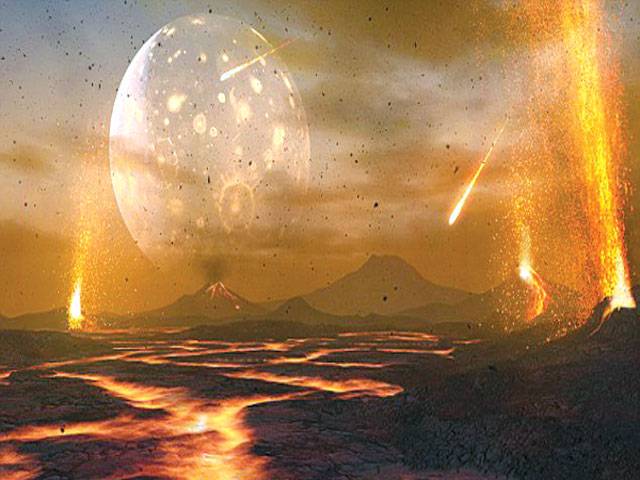MOL
Pennsylvania
The moon is tidally locked to Earth, which means its near side always points towards our planet.
Until now, researchers have debated why this near side has an abundance of dark features - most notable by the ‘man on the moon’ - whereas the far side is much lighter
Scientists have revealed how the near side’s proximity to the scorching young earth weakened it and made it more susceptible to asteroid impacts that caused features like this to form. The dark areas we see on the near side, that resemble a face, appeared when meteoroids struck the Earth-facing side of the moon and created large flat seas of basalt that we see as dark areas known as maria.
No such ‘face’ exists on the farside of the moon, and now Penn State University astrophysicists think they know why. ‘I remember the first time I saw a globe of the moon as a boy, being struck by how different the farside looks,’ said Jason Wright, assistant professor of astrophysics at the university.
‘It was all mountains and craters. Where was the maria? It turns out it’s been a mystery since the fifties.’ This mystery is called the Lunar Farside Highlands Problem and dates back to 1959, when the Soviet spacecraft Luna 3 transmitted the first images of the far side of the moon back to Earth.
Neither side of the moon is ‘dark’ in terms of light though - both receive sunlight as the moon completes its orbit and rotation around Earth.
Researchers at the time noticed that fewer ‘seas’ or maria existed on the portion of the moon that always faces away from Earth.
Now the scientists, reporting their results in Astrophysical Journal Letters, have realised that the absence of maria, which is due to a difference in crustal thickness between the side of the moon we see and the hidden side, is a consequence of how the moon originally formed. The general consensus on the moon’s origin is that it probably formed shortly after Earth and was the result of a Mars-sized object hitting Earth with a glancing but devastating impact.
This giant impact hypothesis suggests that the outer layers of Earth and the object were flung into space and eventually formed the moon.
‘Shortly after the giant impact, Earth and the moon were very hot,’ said professor of astrophysics Steinn Sigurdsson, one of the contributors to the study. Earth and the impact object did not just melt; parts of them vaporised, creating a disk of rock, magma and vapor around Earth.
Thursday, April 25, 2024
Higher temperature weakens moon’s surface

Caption: Higher temperature weakens moon’s surface
3:15 PM | April 24, 2024
Govt likely to appoint Lahore Commissioner Randhawa as Islamabad chief commissioner
12:57 PM | April 25, 2024
PBC upholds suspension of KP adviser’s license
April 25, 2024
KP Governor visits Khyber Girls Medical College
April 25, 2024
KP CM for promoting tourism as industry in province
April 25, 2024
Musk vs Australia
April 25, 2024
Reforming Rehab
April 25, 2024
Tax It Right
April 25, 2024
Academic Uprising
April 24, 2024
Cooperation Momentum
April 24, 2024
Ending animal suffering
April 25, 2024
AI governance
April 25, 2024
AI concerns
April 25, 2024
Population paradox
April 24, 2024
Unveiling differences
April 24, 2024
ePaper - Nawaiwaqt
Advertisement
Nawaiwaqt Group | Copyright © 2024





